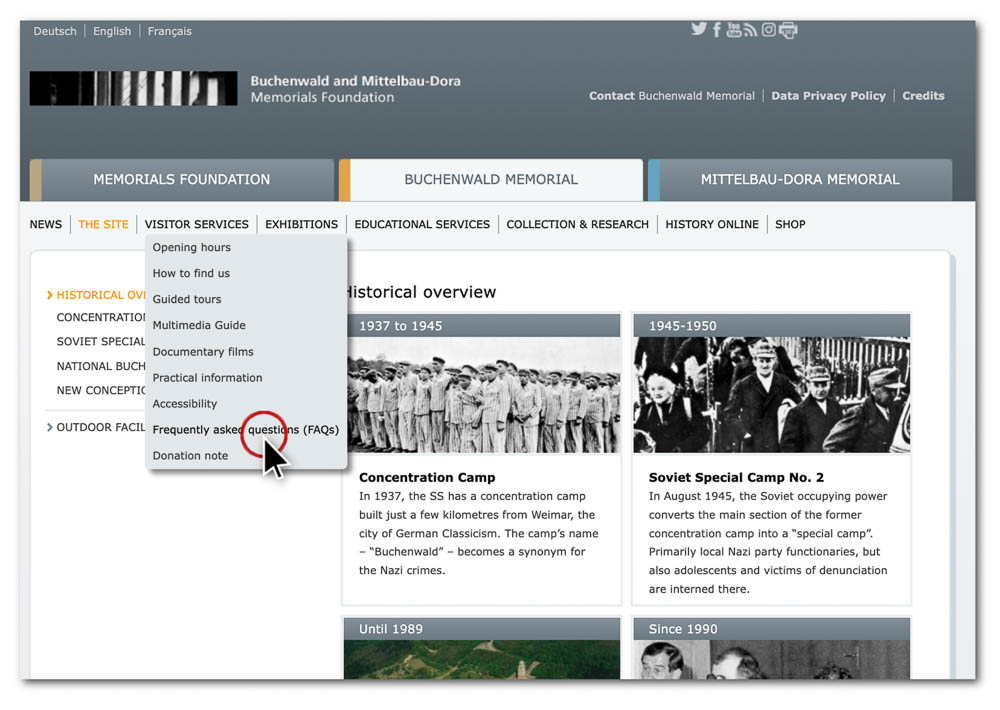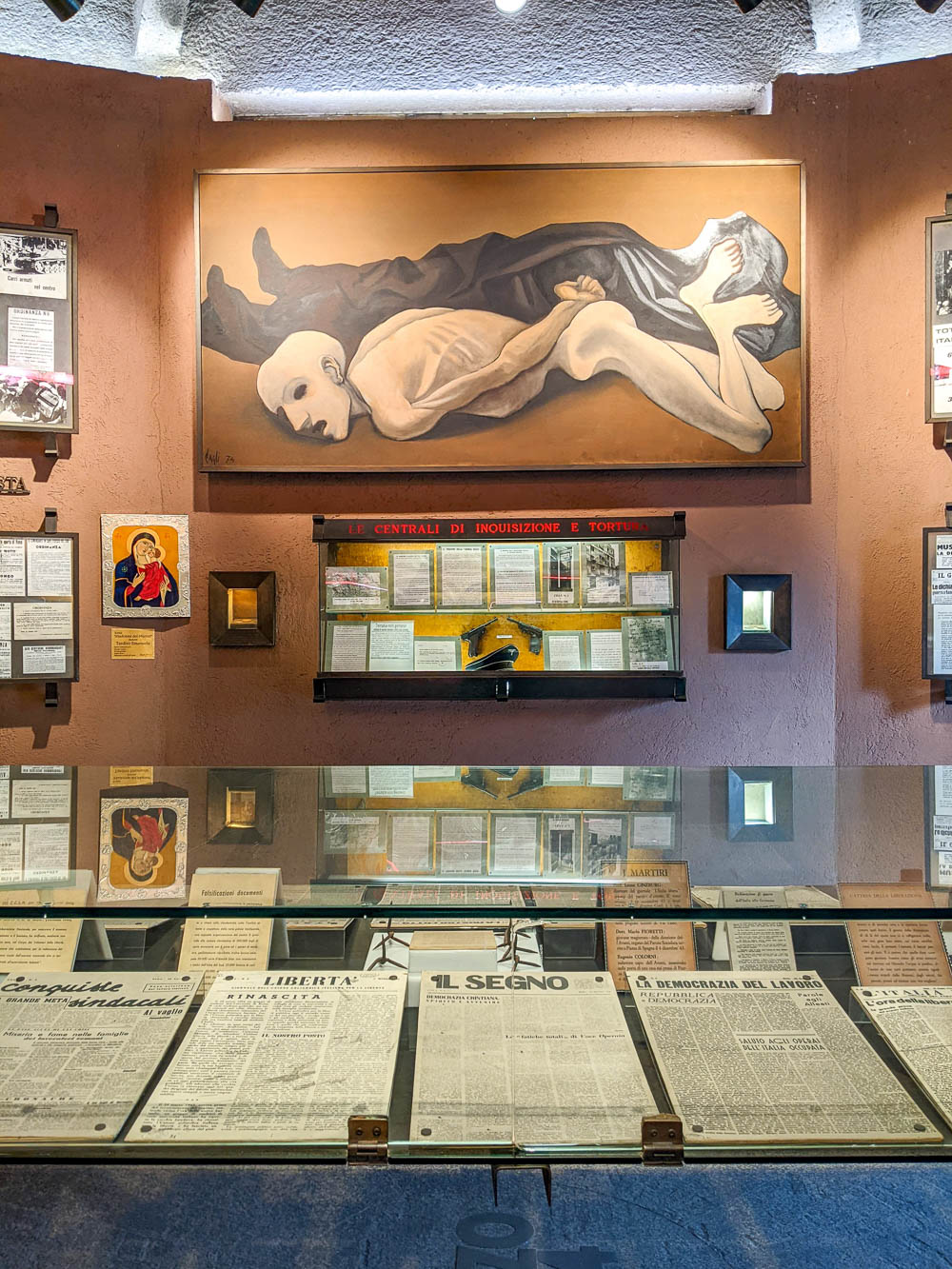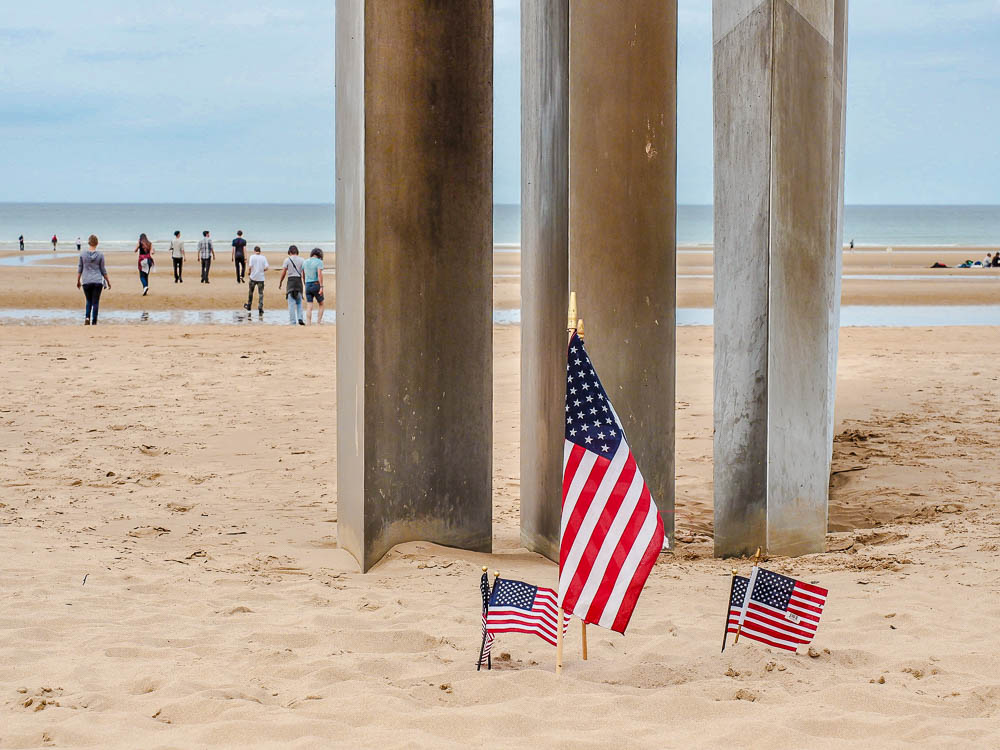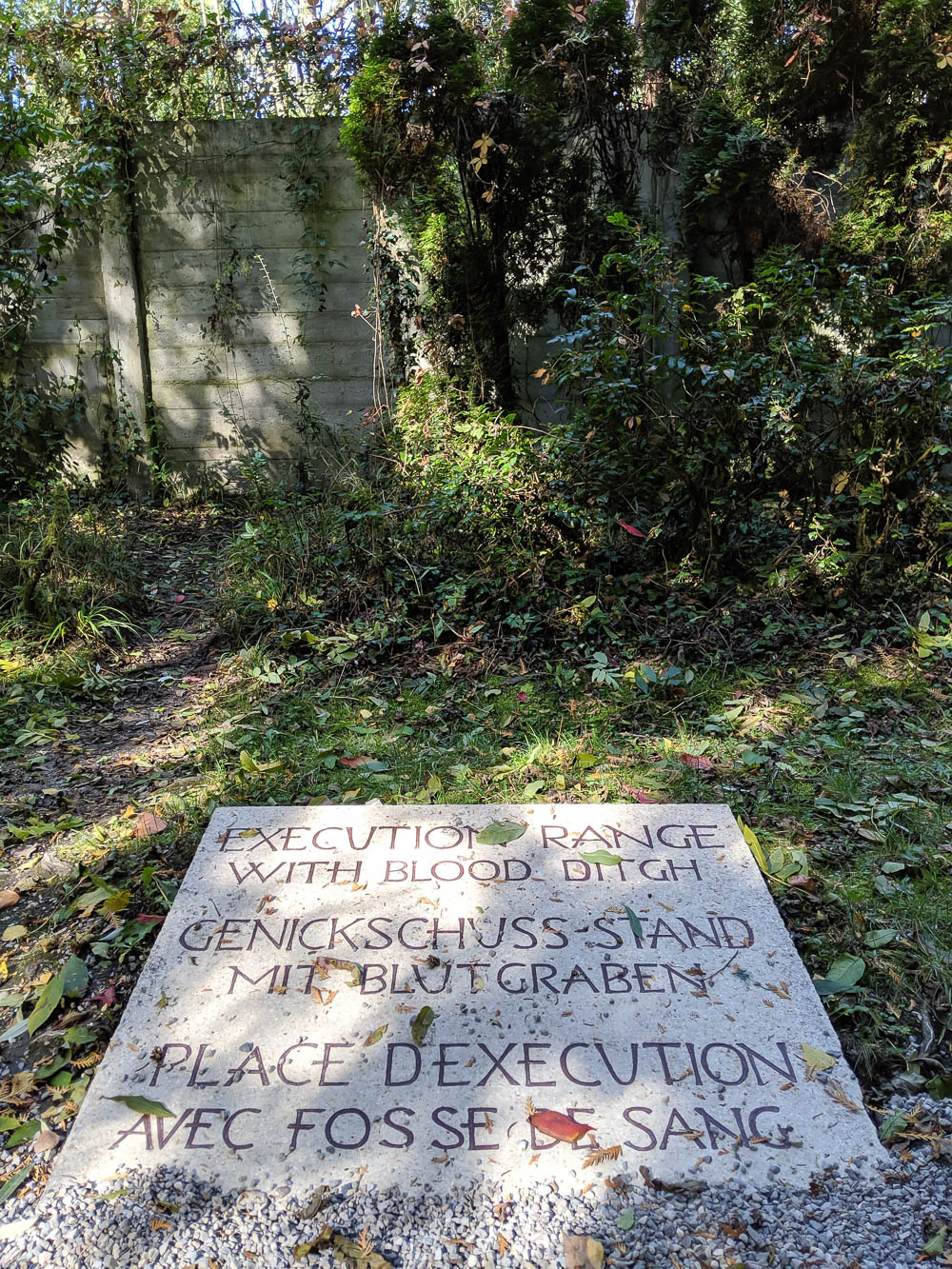One of the questions I get asked most often as a World War II travel expert is: “Is it OK to visit WW2 sites with kids?” Followed by: “Can I? Should I? Is it appropriate? Help!”
While I do not have children myself, I am still able to answer these questions in an objective way and provide the information necessary for you to make these decisions yourself. And because I answer this so often, I decided to put all my advice into one single post to hopefully help the most people.
If you’re wondering if you should bring your child to a World War II museum, battlefield, or concentration camp, you’re in the right place. Read on.

Visiting WWII sites with children
First of all, no one other than you can be the judge of what is “appropriate” for your kids and/or if you should visit WWII sites with kids. Each family has its own definitions of this and each child is different in a million ways. The age of your child also plays a huge role in this decision.
No one is here to tell you if and/or where you should take your child. Instead, I’m simply going to relay some objective information you can use to make these important decisions for yourself. I’ll also include my own advice—not as a parent (which I am not) but as someone who visits World War II sites regularly and intently.
WW2 sites with kids: How to know what is appropriate
Because this is such a common area of concern, almost all of the World War II sites I’ve come across on my travels do attempt to address this one way or another. Usually, this information can be found on their websites. Check for pages dubbed “FAQs” or “Visitor Information.”

For instance, the #1 question on the FAQ page for Dachau Concentration Camp is whether or not the site is appropriate for children. They note that their content is designed for visitors 13+ and therefore do not recommend visits for children under 13. (But understand that it’s at the parents discretion.) You can see more about visiting Dachau concentration camp here.
The Auschwitz-Birkenau State Museum does not recommend visits for those under the age of 14. The Warsaw Uprising Museum in Poland even goes so far as to state that “one adult may supervise up to three children below 13.”
The many sites at Pearl Harbor all welcome children of all ages, but the Bowfin Museum does not allow children under 4 years old on the actual submarine.
The FAQ page for the Jewish Museum in Berlin has suggestions for age limits for different parts of the museum. The Anne Frank House states that the recommended minimum age is 10, but recognizes that “it is up to parents to judge whether their child is ready for such a serious subject.”

The NS Documentation Center in Munich addresses this too and even offers a special museum guide for young visitors that discusses the issues of National Socialism in an “age-appropriate manner.” (Find out more about visiting the NS Doku here.)
Meanwhile, there are a number of WWII tourism sites that welcome young visitors. The Caen Memorial Museum in Normandy, for example, has lots of information to assist visitors with children that’s separated by age group.
See my full guide to visiting Auschwitz here.
Visiting WW2 sites with teenagers
Most WW2 sites do accommodate and even encourage teenage visitors. In Germany, school visits to Holocaust sites are mandatory, so you’ll likely see a large number of school groups during your visit there.
I have both visited WW2 sites with teenagers, and simply seen them touring others on their own, and they’ve always been respectful and inquisitive.

Other ways to find out
Most popular WW2 sites address this issue on their website in some way. But, If you can’t find your answer there, I would send them a quick email and ask them directly.
Beyond that, you can scan through the site’s exhibitions and photos and use them to help make your own judgment call. If the official website lacks any real insight, head to Tripadvisor and check out the photos and reviews of previous visitors to get a better idea. You can also filter the reviews for words like “children” or “kids” to see what others are saying.
You may also find it helpful to check the prices of admission. Some sites will have discounted rates for children, and others may not offer child tickets at all. That should be a clue.

WW2 sites with kids: What to know
Visiting WW2 sites with kids can be tricky. Besides your own concerns related to the content of the site, it’s important to remember the rules of the sites as well. Especially at places like concentration camps, a certain level of respect is expected and often demanded.
- Inappropriate clothing is banned
- Voices are to be kept low
- One should maintain a manner of respect at all times. No running around, goofing off, or laughing loudly. Absolutely no selfies.
- Don’t touch anything
- No eating or drinking
This is just a short list but each site has their own guidelines for behavior. (Here are Dachau’s, for example.) In researching for this article, I spoke to parents about taking their kids to concentration camps. They pointed out that it wasn’t so much about the information they would absorb, but more so whether or not they felt their children were mature enough to be respectful while there.
If you don’t think your kids can behave during your visit to these sites, you should skip it. If you don’t think you can follow these rules either, you should skip it. (Yes, I see this kind of stuff mostly from adult visitors, sadly.)

It’s not always about your child
Much of the information on this page prioritizes the question of whether the content of these sites may be too disturbing for your child. In other words, are these sites going to traumatize your too-young child? However, something super important I want to address is the role your too-young child could potentially play in creating trauma for other visitors.
Echoing the concern of some of the parents I talked to, the question of whether or not you should bring your child to a WWII site isn’t always about whether or not they’re too young to absorb the content, but whether or not he/she is mature enough to visit respectfully. Ask yourself this: “How would they act if they were there unsupervised?” Be honest with yourself about this.
How would they act if they were there unsupervised?
I witnessed something incredibly disturbing on my recent visit to the Franja Partisan Hospital in Slovenia. My friend and I arrived just as a school group of middle school-aged children was leaving.
In the first room we came to, we saw the open guestbook and all the pages the children had just drawn on with phrases like, “Go Hitler!” and “Hitler Legend!” among others. Pages and pages like this. (Along with all their Snapchat and Instagram handles which is disturbing in its own way, but I digress.)

Besides the fact that these were Slovenian children whose own family members were no doubt directly affected by the war’s brutality here, this behavior is beyond disrespectful and inappropriate. BEYOND. Imagine seeing those pages as someone who lost family in the war or survived the concentration camps themselves? (Had I not totally overstepped and ripped the pages out, that is.)
These kids thought they were being hilarious, I’m sure. And one could argue that they’re just ignorant and don’t know enough about the war to understand their actions. But don’t they? They knew what to write in that book to stir up drama, so that means they know what invoking Hitler means in a place like this where people literally died by the hands of Nazi soldiers.
What they don’t understand is the consequences of their actions. I’m sure every one of their parents would say, “My kid would never do that!” So here I am, tattling on your kids, to let you know that you need to really think about whether or not your child is ready to visit these kinds of sites, not just whether or not the site is appropriate for your child.

Visiting concentration camps with kids
Visits to concentration camp memorial sites are absolutely vital to understanding the horrors of the Holocaust. This goes for adults and children. I will talk about WW2 museums and battlefields next, but deciding if/when to bring your child to a concentration camp is going to be your toughest decision when it comes to WW2 travel with kids.
Of all the WW2 sites out there, these are going to be the most graphic. Not only will your kids see graphic photos and video footage, they’ll likely hear firsthand audio recordings (which can be gut-wrenching) and see graphic artifacts in situ. They may see instruments of death they’ve never seen before like crematoriums, gallows, mass graves, and more.
Whereas text-based exhibits at museums and empty battlefields simply hint at the stories of the past, the horrors of the Holocaust are very much contextualized and inescapable at concentration camps.

Visiting WW2 museums with kids
Whether or not you should take your kids to a World War II museum completely depends on the museum. Museums tell their stories in a variety of ways—with photos and/or videos, through written information, via audio guides or guided tours, through interactive exhibits, etc. Each museum uses their own unique combinations of these features.
Some, like the NS Documentation Center, rely primarily on text. Others, like the American Heritage Museum, prioritize historical artifacts.
This certainly makes a difference where child visitors are concerned. Obviously, text-based exhibits are going to be far less disturbing than gruesome photos. Artifacts also have limited power of engagement when taken out of context.
When deciding whether or not you should bring your kids to a WW2 museum, consider the way the museum presents its information.

Visiting WW2 battlefields with kids
WW2 battlefields, like text-based museum exhibits, are going to be the least graphic. Taken at face value, and perhaps to a child’s unknowing mind, battlefields are simply empty landscapes.
Regardless of what happened at these locations decades ago, today they are mostly unrecognizable from the events they’re famous for.
The beaches of Normandy, home to one of the most famous invasions and battles in history, reveal almost nothing of the horrors that happened there. With the exception of the handful of memorials and sculptures, these look like any other beach today.

Monte Cassino in Italy saw one of the fiercest battles of the European war and suffered complete destruction. Today, the site has been rebuilt to its former beauty and its gruesome past is almost nowhere to be seen.
What happened in these places long ago is important and definitely worth teaching to your children, but taken out of context these sites are probably pretty harmless to an unaware young mind.

Visiting WW2 sites with kids: Location matters
When deciding whether you should visit WW2 sites with kids or not, also take into consideration where you will be traveling. For example…
Given the nature of the war in places like Germany and Poland, most of the sites you will visit there are pretty gruesome. For a while after the war Germany tried hard to forget/erase its shameful past. However, a change has since occurred and now the whole, brutal truth is laid out there as it assumes more responsibility and come to terms with its guilt.

On the contrary, WW2 sites here in the United States have completely different undertones. Because the United States’ role in ending the war is almost always an underlying theme, museum exhibits here are largely more hopeful, uplifting, inspirational, etc.
The “Greatest Generation” and the accomplishments on the Home Front are at the forefront of such sites. As a result, parents to young children may find these museums to be more “appropriate” or acceptable. Take the National WWII Museum’s list of youth programs for example. Here, your child can take part in programs with names like “Victory Corps” and “Family Block Party.”
Remember though, there are exceptions to this rule, like the United States Holocaust Memorial Museum in Washington, D.C. However, they also address this on their page dedicated to age appropriateness. (Summary: They have a special exhibition designed to introduce the Holocaust specifically to children in grades four and up.)

Should you bring your child to a WWII site?
Whether or not your child is ready to experience the world of World War II history is entirely up to you and your child. However, know that these are still extremely vital lessons your kid needs to learn and there’s no better way to do so than at these sites themselves. (That’s my one personal opinion on the matter, kthanksbye.)
Don’t write off these experiences completely. Most sites have special brochures, exhibits, online information, etc. specifically for children and teen visitors that address the content in a way that is age-appropriate.

Something else to consider is… there were at least one million children who lived these horrific experiences. They did not have the luxury of being shielded from it.
However, given that my knowledge of parenting is non-existent, allow me to direct you to a few firsthand accounts of visiting WW2 sites with kids:
- LeAnna Brown makes a number of great points when addressing the question of whether you should take your kid to a concentration camp. (Not least of all: “If it could happen to children that young then a child that same age can learn about it today.”)
- The Wyld Family gives many good tips for visiting Auschwitz with kids (and their teens).
- Shana from The Mom Edit brilliantly describes what she learned from touring the Normandy beaches with her two young kids.

WWII resources for children
Many people joke to me that World War II is a hobby for retired men, but I disagree! (Clearly, because I’m a 30-something woman.) Everyone should learn about (and understand) the events of WW2 and it’s never too early to start.
Many educators agree and the result is a vast collection of books and resources on WW2 created specifically for children of all ages. The following is a list of WW2 books written for children and teen audiences that you can use to introduce them to these complex topics before your trips:
- Anne Frank: The Diary of a Young Girl – The life of a Jew in hiding during the Holocaust as told by a (shockingly insightful) 13-year-old. I highly recommend this book for everyone.
- I am Anne Frank by Brad Meltzer – Illustrated biography of Anne Frank for kids.
- Maus by Art Spiegelman – Graphic novel describing the author’s father’s experiences as a Jew during the Holocaust, where the Jews are mice and Germans are cats. (The first graphic novel to win a Pulitzer!)
- I Will Come Back for You by Marisabina Russo – The story of the author’s family’s experiences as Jews in Italy during WW2, told in a way that is “accessible and appropriate for young readers.”
- The Boy in the Striped Pajamas by John Boyne – The story of a 9yo boy who lives next door to a concentration camp and the friendship he forms on the other side of the fence.
- Simple History: A Simple Guide to World War II by Daniel Turner – Illustrated and easy to follow guide to the events of WW2
- The whole What Was series is great for teaching kids about historical events:

WW2 books for teens and young adults
- Night by Elie Wiesel – The autobiographical account of the author’s survival as a teenager in the Nazi death camps. (This was required reading in my high school and my first introduction to the Holocaust.)
- The Book Thief by Markus Zusak – About a young German girl who befriends the Jewish man hiding in her basement.
- They Called Us Enemy by George Takei – Autobiographical account of the author’s childhood imprisoned in an American internment camp.
- Salt to the Sea by Ruta Sepetys – Story of four individuals who eventually find themselves victims of a maritime disaster.
- The Librarian of Auschwitz by Antonio Iturbe – Biography of Dita Kraus, a 14yo girl charged with guarding books at Auschwitz.

Have you visited any WWII sites with kids? What were your experiences like?
Let me know in the comments below.
Save this info, pin this image:


